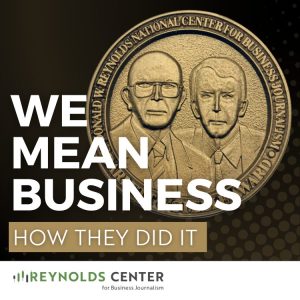For the past quarter-century, big media companies have been on a tear to get even bigger. For publishers, that meant snapping up broadcast properties around the country. Many of the major names did it. And now, those marriages are breaking up.
This week, Gannett Co., Inc. announced plans to divide itself into two entities, with newspapers going one way, and broadcast and online going another. Its move comes on the heels of similar steps by News Corp., the Tribune Company, E.W. Scripps, and Time Warner.
According to the Wall Street Journal, “No significant newspaper owners will have U.S. broadcast assets to help buffer their business as competition from the Web erodes their readership and advertising base.” I discussed some of the major issues in the media company breakups with Ted Simons on Arizona Horizon on KAET Eight Arizona PBS in Phoenix this week (see video below).
It’s definitely a seminal moment for publishers and broadcasters, and some implications for both.
Publishers.
Putting print publications into their own category raise a number of questions. One, to what degree have broadcast assets propped up print assets? Now, with publishers on their own, there will be more clarity on this.
Two, will the break-ups lead to more consolidation on top of the weeding out that has already happened on the print side? Some see the outlook as ominous, according to the Associated Press. ‘To take a draconian view, over next 10 years a lot of newspapers could disappear or be much smaller print products,’’ Edward Atorino, an analyst with Benchmark Co., told the news service.
On a conference call with analysts this week, Gannett CEO Gracia Martore said there was an opportunity to combine back office functions and improve efficiencies among publications. That’s the kind of step that Advance Publications has taken within its newspaper/online properties, such as those in Michigan, Alabama, and Louisiana.
While Gannett has always declared itself to be an innovative company, there are already signs that it wants to modernize further. Employees at the Nashville Tennessean were told that they would have the opportunity to re-apply for their jobs under a “bold new structure” for the newsroom.
Conversely, are there any opportunities for growth? A major newspaper group, like Gannett, which has been spun off debt-free, might be able to go on the prowl in a way it could not when the company had broadcast assets to consider.
Broadcasters. The TV, radio and online side might seem to be the clear winners in the break-up scenario. They lose the drag that print has been, at least in some markets, and also are freed from federal restrictions limiting ownership of print and television outlets in the same markets.
Forbes suggests that broadcast assets could become attractive acquisition targets. With broadcast companies reporting print-free results, the most attractive properties are likely to become readily visible.
If nothing else, the big breakup pits publishers versus broadcasters in a way that the industry hasn’t seen in decades. As Lady Mary Crawley said in the final episode of Season Four of Downton Abbey, “Let battle commence.”











